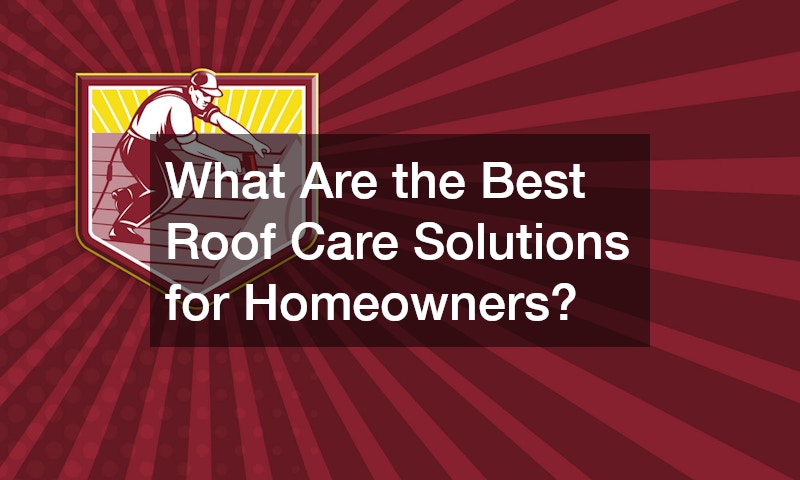As a business owner, you’ll soon learn the roof of your commercial space significantly impacts the quality of operations. It does a lot for you, from protecting you, your employees, and your structure against the elements to helping keep the indoor spaces at a comfortable temperature. Here’s everything you need to know about industrial roofs.
1. Commercial Roofing Types
In your search for a new commercial roof, you’ll soon realize there are plenty of industrial roofs to choose from. Metal roofing is one of the most popular for several reasons. Its 40 to 60-year lifespan is the most notable, but there are other great benefits.
Metal roofs feature an attractive, finished look that enhances the aesthetics of commercial metal buildings. They also have great fire resistance capabilities, which is good news for business owners. The only significant downside to this is metal is more prone to corrosion. However, manufacturers now include protective surface layers on modern metal roofs, which help minimize damage from pollution, moisture, exposure, and other environmental factors.
Built-up roofing membrane is another common type of commercial roof. It’s made of alternating layers of gravel and tar. The number of layers ultimately determines the cost and durability of these roofs.
You may consider this roof for several reasons. For one, it’s inexpensive and easy to repair. This benefit alone can save you a significant amount in the long run.
This seamless roofing also handles foot traffic well but relies on a strong understructure to support the weight and vibrations. It’s resistant to UV rays, and you can coat it to deflect heat.
Green roofs are an increasingly popular choice for business owners. They’re known for their tough waterproof membrane, usually fully covered by green plants. This roofing is sustainable and can help improve your building’s air quality. Adding a green space on this roof is also easy, making it a great relaxation spot for employees.
They often feature sophisticated water and drainage management systems, so you won’t have to worry about water pooling. Some also have climate control and sensor capabilities. Investing in a green roof for your commercial building may make you eligible for utility and government incentives, which can translate to savings.
2. Maintenance Options for Industrial Roofs
Two main options for maintaining industrial roofs exist; scheduled and preventative maintenance. A professional performs checks after a certain period, replacing essential parts to reduce wear and tear. The aspect of timing is what distinguishes this type of maintenance. Inspections and maintenance are carried out as per a specified schedule to prevent issues from emerging in the first place.
Preventative maintenance is performed based on expert evaluation of each component. Instead of inspecting every maintenance issue at once, this approach focuses on inspecting each part separately and creating a maintenance plan according to the findings. For instance, in the case of roof repairs, professionals may assess each component independently to estimate how long it’ll be before serious issues start arising..
These forecasts help inform which specific localized repairs are needed to prevent a problem in the first place. For example, they may spray decks with new foam insulation if the home has been standing for a while. Ultimately, any form of maintenance is better than no maintenance.
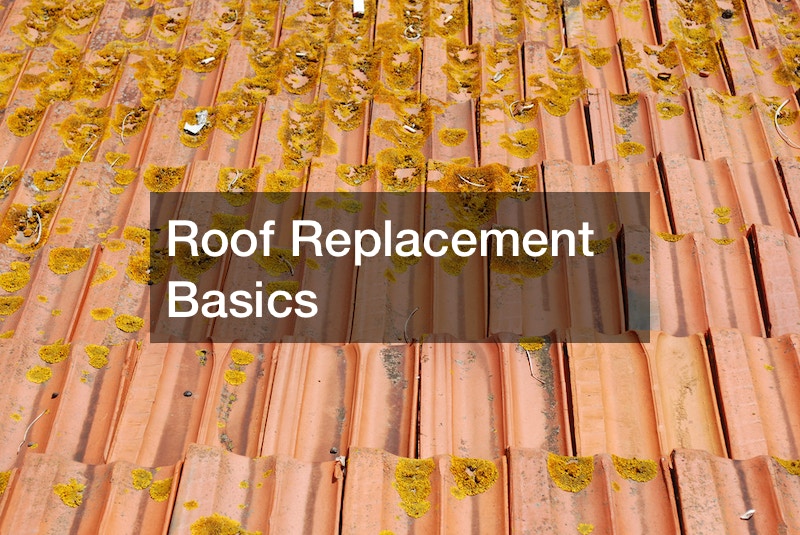
3. Roof Replacement Basics
Commercial roof replacements are massive projects with several variables that can affect the cost, project timeframe, and how intrusive or noninvasive the job is. The building’s height, access, the type of replacement to be installed, and whether a full replacement or an overlay is appropriate are all important factors. Weather conditions and when in the year to replace it are equally essential.
Unfortunately, there is no ‘one-size-fits-all’ approach to commercial roof replacements. That’s why a professional commercial roofer starts by conducting a thorough on-site inspection of the existing roof to assess conditions such as the building’s access height, among others. They also take core samples to give building owners multiple project scope options.
They’ll create a timeline for your new commercial roof using a three-part plan that outlines every aspect of their services, including the design, crew size, mobilization, footprint, and closeout. A commercial roofer does all this while considering the type of building, the client’s requirements, and the comfort of the building’s occupants. Most roof replacement projects employ the services of a dumpster rental business to make disposal of old roofing materials easier.
4. Transporting Roofing Materials
Roofing materials often require special delivery since they are large, heavy, and cumbersome. The materials might include anything from massive wooden structures to rolled products, depending on the type of roofing system. Open-deck vehicles are typically the preferred option.
Full truckload freight shipping is usually used to transport large quantities of roofing supplies. It can either be in dry vans or flatbed trailers. For a small number of shingles, a dry van is sufficient. You can lower shipping costs by selecting LTL (less than truckload). Depending on your state, different laws may apply to heavy hauling.
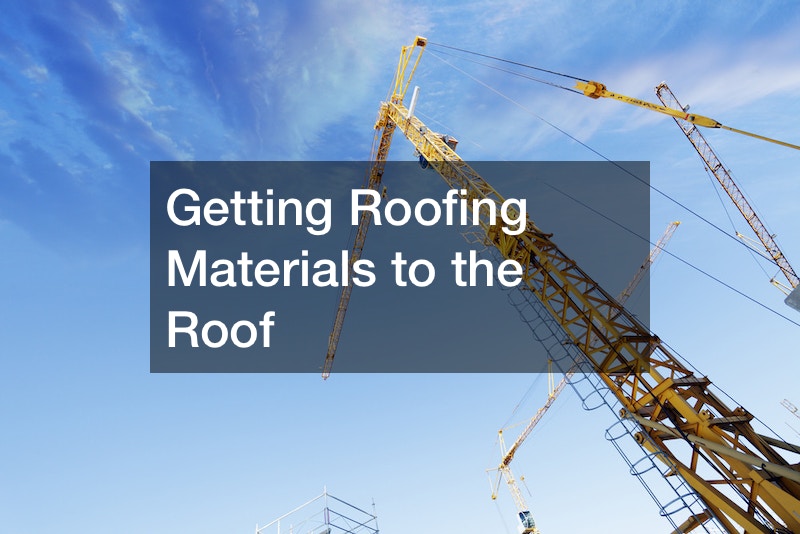
5. Getting Roofing Materials to the Roof
When you look at industrial roofs, you may wonder how the pros get the materials to the roof. There are several ways they approach this undertaking. Let’s get it out of the way; hand-carrying isn’t one of them. While shingles may look light, a bundle of them can get heavy. Let alone climbing a ladder while they’re on your shoulder.
A forklift is the preferred choice for commercial roofing projects. The reason for this is such projects often use heavier materials. Some professionals also use a piggyback forklift, which has more room for carrying materials.
Some roofing companies also employ a winch-operated platform. Using pulleys and a thick rope that runs around the whole length of the ladder, the platform moves up and down. Most can lift hundreds of pounds, making them perfect for raising shingles in stacks faster than by hand.
6. Penetrations Through Commercial Roofs
Industrial roofs feature several penetrations. Common penetration details include tracks for mechanical window cleaning systems, extraction ducting, heating and air condition units, and hot and soil vent pipes from log burners or boiler flues. Rainwater outlets also qualify as penetrations if they pass through the parapet or the deck in a horizontal or vertical direction. In cold roofs, penetrations are often necessary to provide constant airflow between the insulation layer and the deck’s underside. Mechanically-fixed solar arrays are also in higher demand today, especially for big commercial projects.
Roof penetrations don’t have to be problematic; they just need to be properly designed. They’re a key part of the detailing process since they enable flat roofs to hold vegetation and other services, maximizing space. Reputable flat roof manufacturers should have the ideal detail drawings for most penetration requirements.
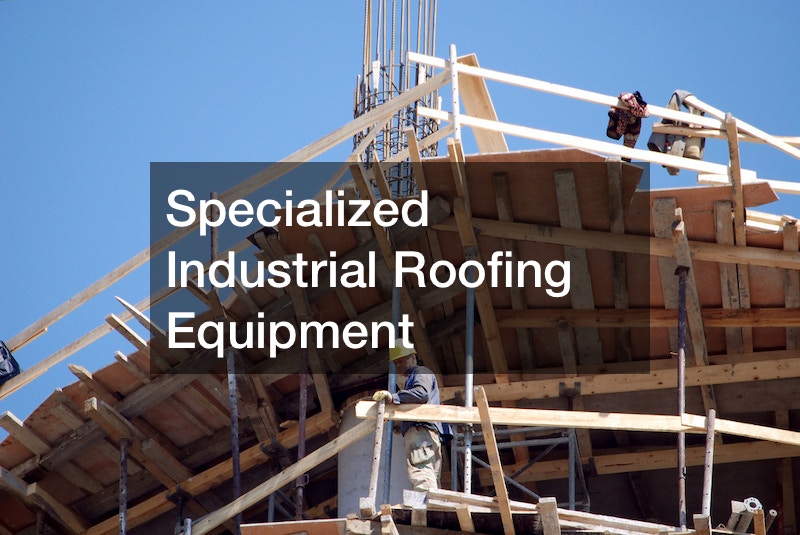
7. Specialized Industrial Roofing Equipment
Generally, each job involving industrial roofs is unique. That’s why professionals often employ specialized tools such as the vane demister. This tool helps to separate liquid droplets from gas streams when necessary.
You’ll also often find commercial roofers using drones for inspections. They’re more accurate because they come with technology such as a thermal camera. This technology eliminates the guessing game.
Drones also speed up the on-site estimate process and make the job safer for everyone. Commercial roofing contractors often employ another popular specialist equipment: the Equipter RB4000. It’s an innovative roofing trailer that proves to be useful for almost all jobs
Its 12-foot raise extends to several commercial structures’ rooflines. Thanks to its self-propelled motor mechanism and rust-resistant container, it can transport up to 4,000 lbs of debris from the roof to an on-site dumpster.
The RB4000 also serves as a supply lift, making it multifunctional. Pack everything into the equipment’s container, hoist it, and unload it to avoid strenuous setup and production tasks.
An automatic welder is a favorite for many roofing professionals. Employing a handheld seam welder to weld your roof seam is, for lack of a better word, a waste. Automatic seam welders make things a whole lot easier. Although they’re more expensive, they help save time and energy while doing the job faster.
Seam rollers are employed in the commercial roofing sector to guarantee that roofing seams correctly adhere to the roof during welding. They come in various materials, including steel and silicone. You can find several sizes to suit your need, including smaller handheld versions and bigger stand-up rollers.
8. Roof-Mounted Solar Panels
It’s common to spot roof-mounted solar panels on industrial roofs. There are good reasons for this. Compared to residential consumers, the cost of power is always higher for industrial and commercial users. The cost of grid power is always going up.
Installing solar panels on your commercial roof will significantly reduce energy costs. Although the upfront cost of the installation may be significant, you’ll recoup it through the money savings on electricity bills. Adopting solar energy can also make you eligible for a tax break. According to CIC Construction Group, solar systems that go into service in 2022 or later and start construction before 2033 qualify for a 30% ITC or a 2.6 cent per kWh PTC if they fulfill the labor specifications set out by the Treasury Department or are smaller than 1 megawatt (MW).
Regularly schedule solar panel cleaning if you decide to go solar. Failure to do this will reduce the effectiveness of your system due to the repelling layer of grime that’ll form. To enjoy the maximum results, invest in periodic cleaning by a professional.
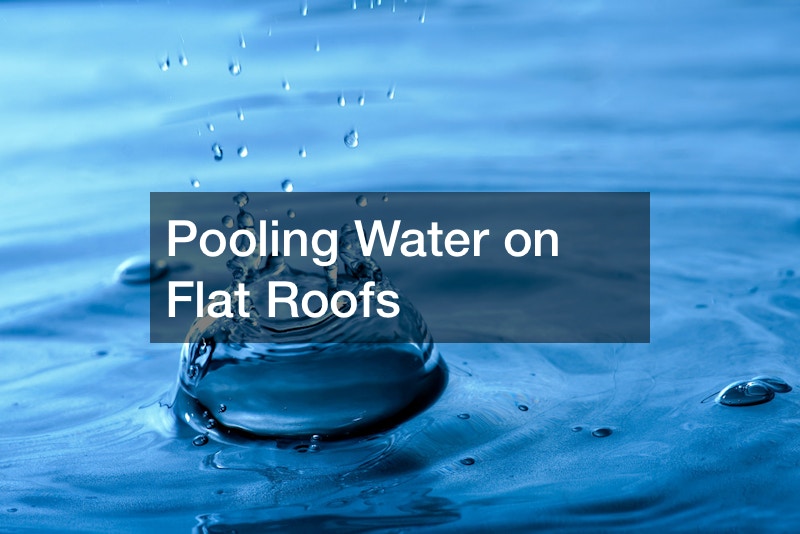
9. Pooling Water on Flat Roofs
Flat industrial roofs are notoriously known for the issue of water pooling. Large puddles may develop on the roof surface if the drainage system is inadequate for the building or for other reasons related to the infrastructure of the building or the roof design. The volume of liquid may be so great that it can’t simply evaporate off the roof when the sun comes out, leaving the stagnant water with nowhere to go.
This can cause many problems for business owners. For one, it can cause structural issues for the roof and the entire building. Stagnant water will also increase the likelihood of a waterborne pathogen causing health issues for employees, customers, and anyone else who spends time in the building. These are just the tip of the iceberg of the risks.
After a rainstorm, it’s normal to see standing water on flat roofs for the following 12 to 36 hours. However, the National Roofing Contractors Association advises that a qualified commercial roof contractor should check any standing water detected on flat roofs for over two days. To remedy the issues, a professional roofer will likely start by flushing the existing drains to remove leaves, sticks, and other debris. This will let rain and snowmelt drain away from your commercial structure and make your drainage system last longer.
10. Effective Rainwater Drainage Systems
Industrial roofs need an effective drainage system. Business owners have options here. The most common drainage solution is a gutter system. Water collects in the gutters, and the pipes direct water away from the building. This option is popular since it’s affordable and effective.
Interior drains are a system of pipes and gutters that transport water from inside the structure to the outside. They frequently feature a filter that prevents leaves and other debris from accumulating in the drains. Larger flat roofs significantly benefit from this drainage system, especially if they collect water in the middle of the roofing structure.
Scuppers, positioned along the edges of your roof to direct water away from your commercial structure, are excellent for keeping the walls of your structure dry. They’re reasonably priced, but you should use them in a tapered system for maximum effectiveness. This drainage system works well when there is a lot of rain, but it struggles when there’s melting snow on your commercial roof.
For your basement drainage solutions, consider investing in a sump pump. It’ll prevent flooding from rainwater and sewage backups. The result will be an improvement in the air quality of your commercial structure.
A lot goes into industrial roofs. Enlist the help of a professional to ensure you’re covering all your bases. After all, the roof is the only thing between you and the elements. Ensure it’s durable, resilient, and able to provide safety even in the most extreme weather.




